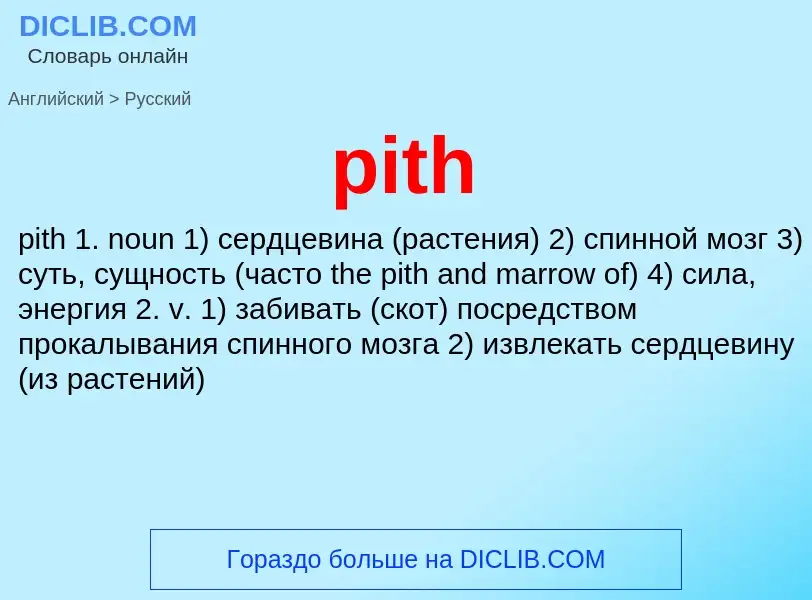Перевод и анализ слов искусственным интеллектом
На этой странице Вы можете получить подробный анализ слова или словосочетания, произведенный с помощью лучшей на сегодняшний день технологии искусственного интеллекта:
- как употребляется слово
- частота употребления
- используется оно чаще в устной или письменной речи
- варианты перевода слова
- примеры употребления (несколько фраз с переводом)
- этимология
pith and marrow - перевод на Английский
общая лексика
жёлтый костный мозг
[ræd'mærəu]
анатомия
красный костный мозг
Википедия

Pith, or medulla, is a tissue in the stems of vascular plants. Pith is composed of soft, spongy parenchyma cells, which in some cases can store starch. In eudicotyledons, pith is located in the center of the stem. In monocotyledons, it extends also into flowering stems and roots. The pith is encircled by a ring of xylem; the xylem, in turn, is encircled by a ring of phloem.
While new pith growth is usually white or pale in color, as the tissue ages it commonly darkens to a deeper brown color. In trees pith is generally present in young growth, but in the trunk and older branches the pith often gets replaced – in great part – by xylem. In some plants, the pith in the middle of the stem may dry out and disintegrate, resulting in a hollow stem. A few plants, such as walnuts, have distinctive chambered pith with numerous short cavities (See image at middle right). The cells in the peripheral parts of the pith may, in some plants, develop to be different from cells in the rest of the pith. This layer of cells is then called the perimedullary region of the pithamus. An example of this can be observed in Hedera helix, a species of ivy.
The term pith is also used to refer to the pale, spongy inner layer of the rind, more properly called mesocarp or albedo, of citrus fruits (such as oranges) and other hesperidia. The word comes from the Old English word piþa, meaning substance, akin to Middle Dutch pitte (modern Dutch pit), meaning the pit of a fruit.


.jpg?width=200)
![Bone marrow may have first evolved in ''[[Eusthenopteron]]'', a species of prehistoric fish with close links to early [[tetrapod]]s.}} Bone marrow may have first evolved in ''[[Eusthenopteron]]'', a species of prehistoric fish with close links to early [[tetrapod]]s.}}](https://commons.wikimedia.org/wiki/Special:FilePath/Eusthenopteron BW.jpg?width=200)

![megakaryocytic cells]]. megakaryocytic cells]].](https://commons.wikimedia.org/wiki/Special:FilePath/Trilineage hematopoiesis, annotated.jpg?width=200)
